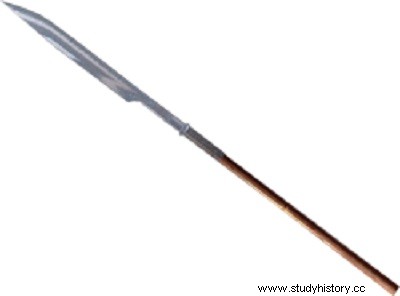
The vouge (or voulge, or breaching knife) is a medieval polearm that appeared in Germany and Switzerland at the end of the 13th century. Used by infantry, it is like many polearms derived from an agricultural tool.
Description
The vouge consists of a wide blade in the shape of a trencher, mounted on a shaft of about 2 meters. A fang is sometimes added to it on the opposite side of the blade, which allows it to be used to size like a heavy axe, to thrust with its tip and to hook the opponent with the steel fang.
This weapon was designed to reach the riders and cut the hocks of the horses, even also to cut the strips of leather at the joints of the armours. The vouge was used by the vougiers, men-at-arms who lined up, two meters apart, in 2 or 3 rows, and whose aim was to break cavalry charges. Although this is not their primary purpose, the vougiers could, if the opportunity arose, be used against the infantry, if they ever made a charge.
The evolution of the Swiss vouge is at the origin of the halberd.
